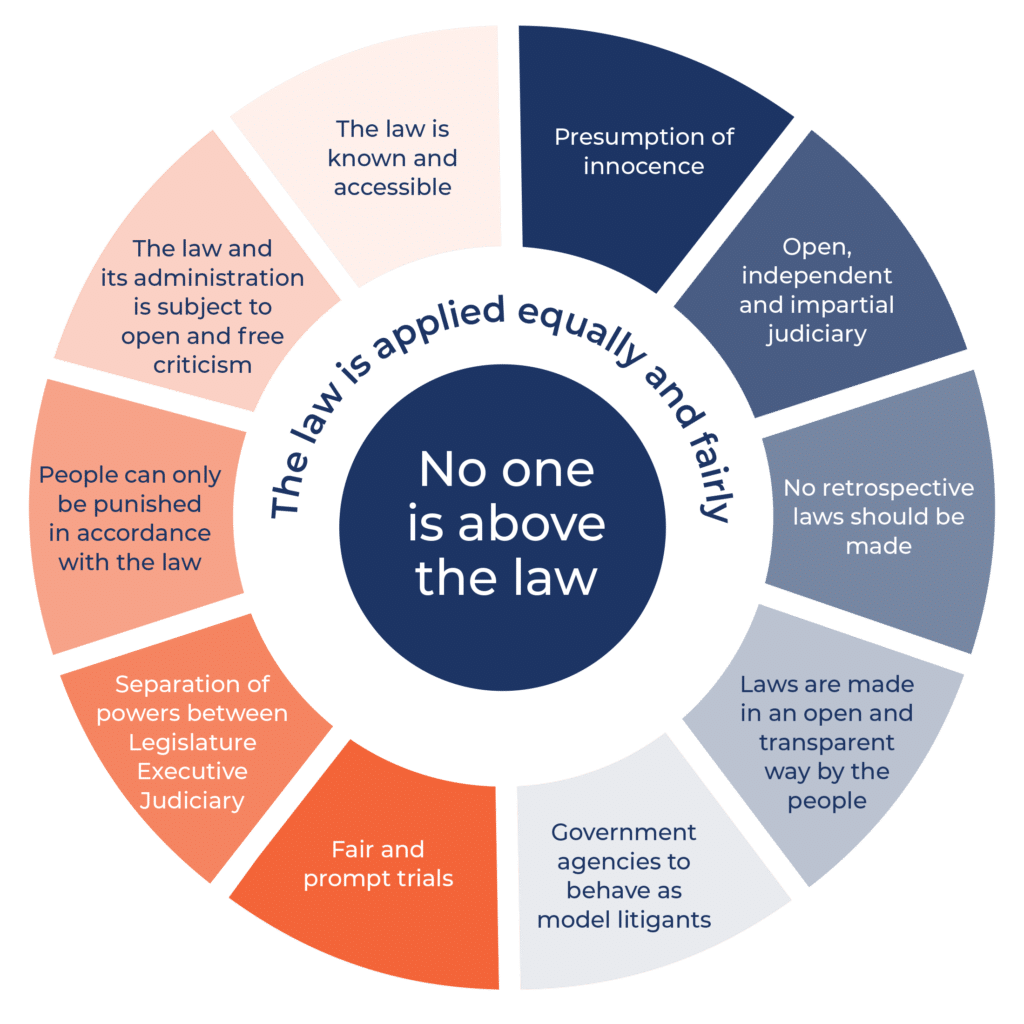The High Court’s recent unanimous ruling in Honeysett v R [2014] HCA 29 is a reminder of just how important the rules of evidence are for safeguarding the integrity and accuracy of decision-making in all court cases, and particularly in criminal trials.
Important Links
- High Court Judgment Summary
- High Court Chronology of the Case
- High Court’s audio-visual recording of the hearing
See the High Court Case page for other documents related to the case.
In September 2008, a person supposedly identified as Anthony Honeysett, along with two other people, entered the Narrabeen Sands Hotel, in Sydney’s Northern Beaches, wearing dark clothes with a white pillow or T-shirt wrapped around their heads, and carrying a hammer and a shortened shotgun. They confronted the employees of the hotel, stole nearly $5000 in cash, and escaped in a stolen Audi RS 4, which bore separately stolen number plates too.
Honeysett was charged with armed robbery in the NSW District Court. The prosecution case was largely circumstantial, and relied on a few different ways of connecting Honeysett to the armed robbery, including DNA comparisons. The most controversial piece of evidence, however, was the testimony of an anatomy expert from the University of Adelaide, Professor Maciej Henneberg. The robbery had been captured on CCTV footage at the hotel. Professor Henneberg watched this footage first, “to avoid the psychological phenomenon known as ‘displacement,’ which is the tendency to read the features of a known person into poor quality images,” and recorded a list of the physical characteristics of the person in the footage. He then repeated the process with some images and videos of Honeysett in police custody at Surry Hills Police Station after his arrest, and made a similar list. He then drew the conclusion that there were no anatomical dissimilarities between the two individuals, and this evidence was used by the prosecution to argue that Honeysett was one of the robbers of the hotel.
Honeysett was found guilty in 2011, and sentenced to 8 years in prison, with a non-parole period of 3 years and 10 months. He appealed against this conviction to the NSW Court of Criminal Appeal in 2013, and lost, and then appealed again to the High Court in March this year. His primary ground of appeal was that Professor Henneberg should never have been allowed to give his evidence.
In the Australian court system, all trials – whether civil or criminal – are conducted in accordance with the ‘rules of evidence.’ These rules, in the words of Justice “Doc” Evatt in Ex parte Bott, “represent the attempt made, through many generations, to evolve a method of inquiry best calculated to prevent error and elicit truth.” One of the most important areas dealt with by the rules of evidence is what is known as “opinion evidence.” Generally, opinion evidence is excluded from trials, because it is thought to be irrelevant. It is the role of the judge or jury to assess the evidence before them and make up their own mind, and the unsubstantiated opinion of some witness about facts or issues in dispute is not relevant to that decision.
However, there are a number of exceptions. One obvious exception is where a witness, through training or expertise, is actually in a better position to assess certain pieces of evidence. This is known as “expert evidence,” where someone with specialised knowledge of a particular field is allowed to testify in court about their opinion on certain issues.
This is quite a narrow exception, however. Certain important conditions, to be found in s 79 of the Evidence Act 1995 (NSW), must be met before an expert is allowed to give his or her opinion in court. In Honeysett, the most important relevant condition was that for an expert’s opinion to be allowed in court, it must be “wholly or substantially based on” the expert’s field of expertise. In other words, just because a person is highly trained or experienced in some area, does not mean that a court will listen to what they have to say about other areas. An engineer might be allowed to give his or her opinion about the weight-bearing capacity of a beam in a workplace accident case, for example, but not about whether the person who placed too much weight on that beam did so intentionally. That opinion would be irrelevant, because the engineer has no specialised knowledge that would assist him or her to form that opinion. This is an important part of presenting a jury only with evidence that is relevant and not prejudicial to the accused in a criminal case.
In Honeysett, the defence counsel argued that Professor Henneberg’s evidence was not actually based on his background in anatomy. After looking at the CCTV footage and the police custody images and videos, Professor Henneberg had come up with a list of physical characteristics of the individuals he saw, including that they were both right-handed, they both had oval-shaped heads when viewed from above, they were both of medium height, they both had short hair, they were both “ectomorphic,” i.e., thin, and so on. It was common ground between the parties that none of this evidence was based on “anthropometric measurement or statistical analysis,” or any other kind of objective criteria. It was just what Professor Henneberg had noticed while viewing the images and footage. This, the defence argued, was not enough to meet the criteria in s 79.
The High Court agreed with the defence counsel, holding that none of the characteristics on Professor Henneberg’s list were based on his “undoubted knowledge of anatomy,” but were instead based only on his “subjective impression of what he saw when he looked at the images.” This was not enough for his testimony to be admitted as expert evidence.
In other words, the High Court found that you don’t need to do a doctoral degree in anatomy to come to the opinion that a person has an oval-shaped head in a certain photo, or that a person is right-handed after you see them sign their name on a document with their right hand. A jury was perfectly capable of coming to these opinions itself, without any need for expert evidence. Professor Henneberg’s evidence was not “wholly or substantially based on” his knowledge of anatomy, and, because of that, should never have been allowed in court. Honeysett’s conviction was quashed, and a new trial was ordered.
This decision reinforces the importance of maintaining the integrity and accuracy of decision-making in all court cases, and particularly in criminal trials. It is a golden thread running through our legal system that an accused ought to be treated with absolute fairness, and given the benefit of any reasonable doubt. Insisting that criminal convictions be based on facts, not opinions, is an important part of this guarantee.
 This case note was penned by William Shrubb, UNSW Intern. Join the discussion about rule of law issues on Twitter @RoLAustralia.
This case note was penned by William Shrubb, UNSW Intern. Join the discussion about rule of law issues on Twitter @RoLAustralia.

